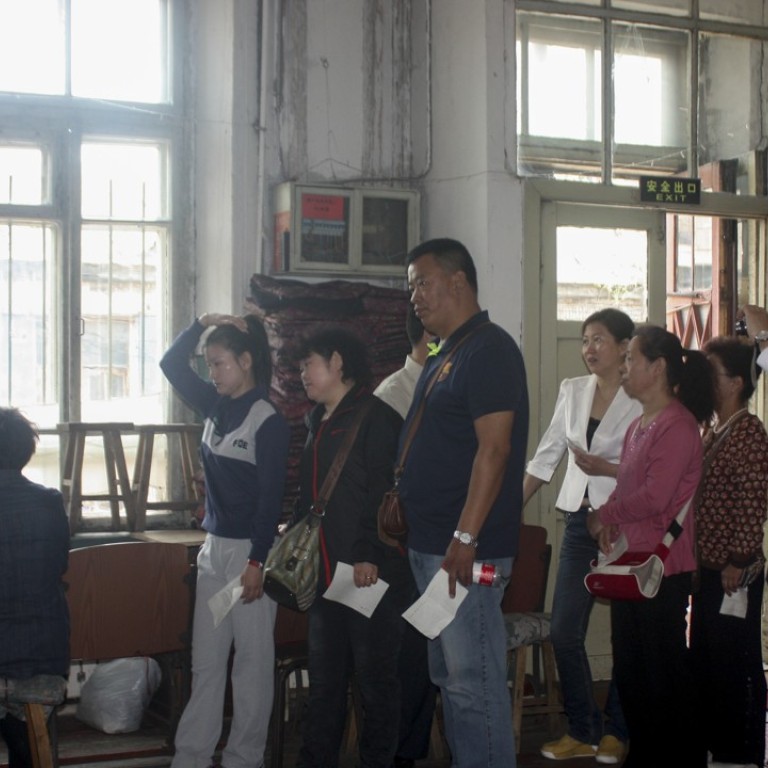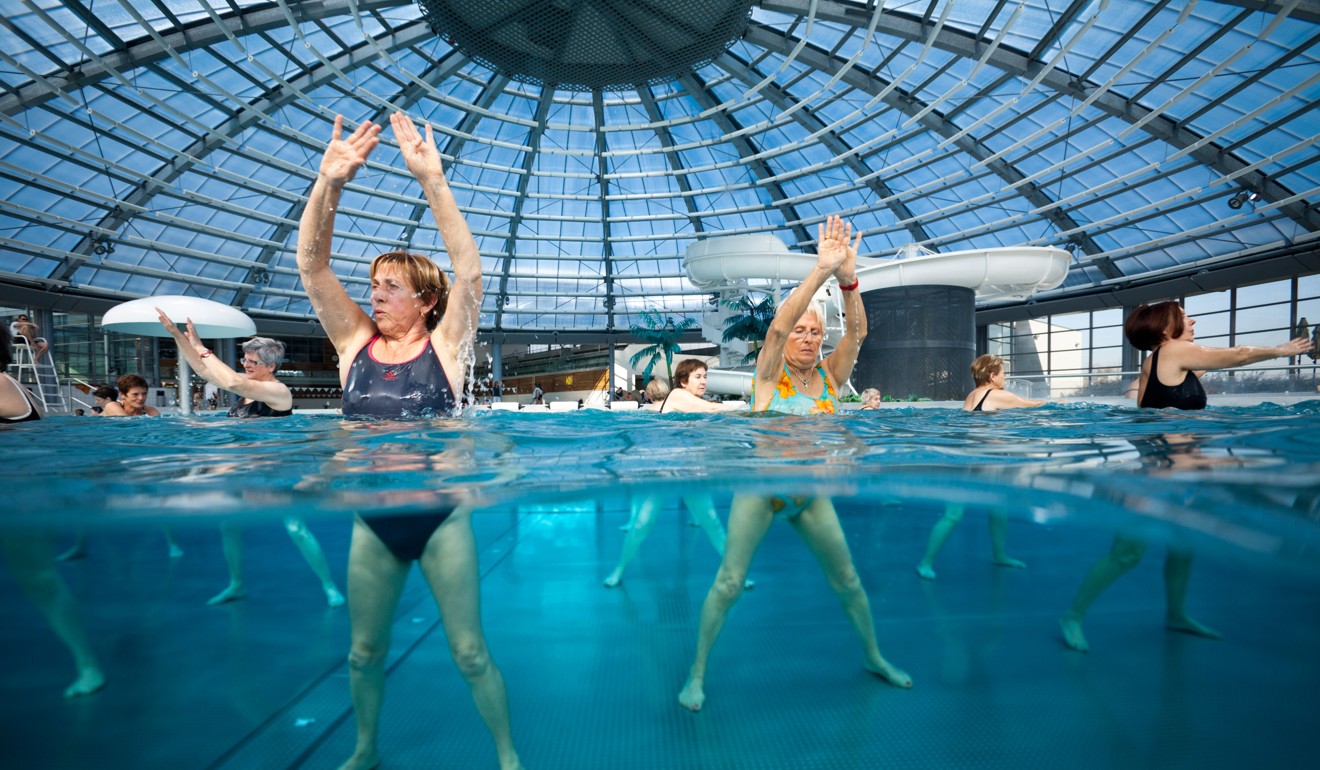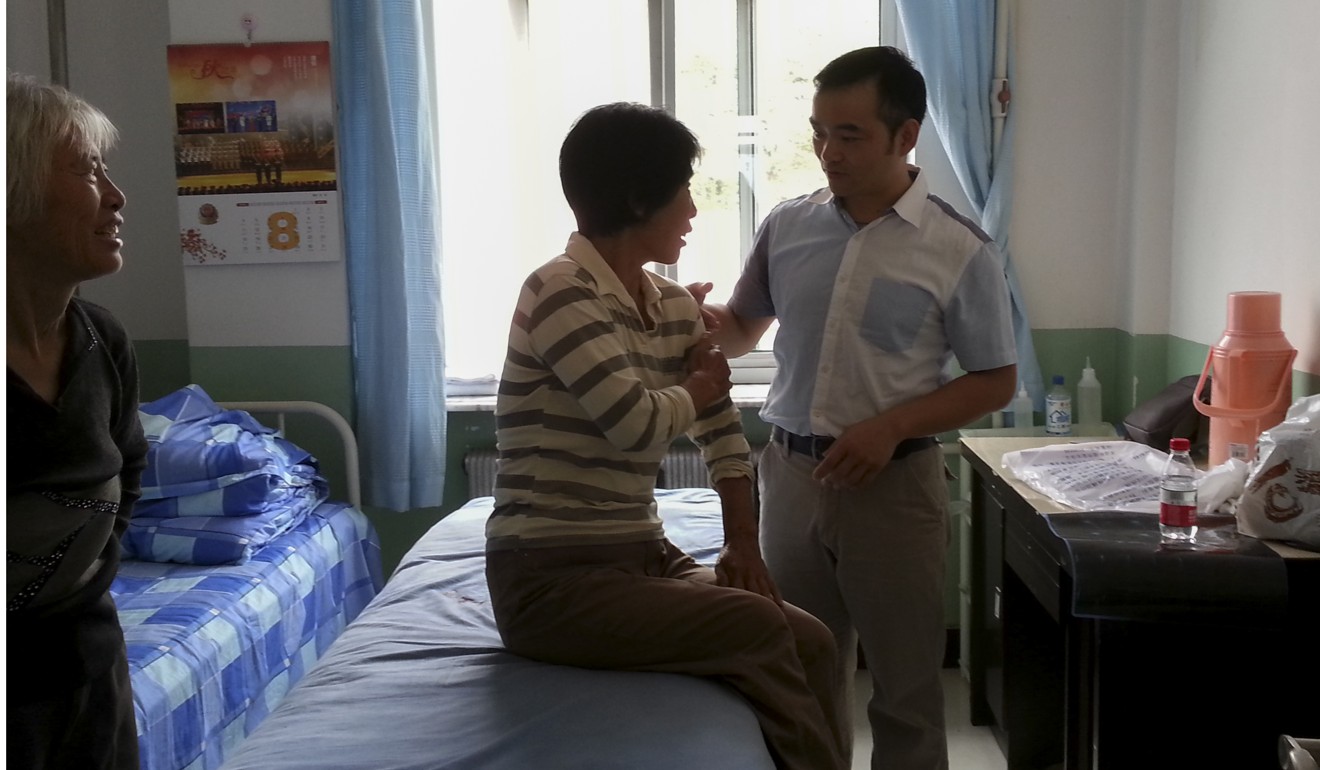
Therapist treats Hong Kong elderly and China’s poor for free with gentle form of chiropractic
After three years of travel and study, Sampsun Wong developed Yide Therapy. Now he gives free aqua therapy treatment to old people in Hong Kong, runs a medical centre and travels around China offering help to the needy
The crowd is small at the Kennedy Town Swimming Pool early in the morning. But around a dozen people in their swimsuits and goggles concentrate in one corner of the 1.2-metre-deep (4ft deep) training pools, counting the beats and lifting their legs up high.
Most of them – in their 60s and some even in their late 70s – could not do the same moves on land. But the lukewarm water’s buoyancy supports their weight, allowing them to work on their flexibility without the risk of falling.

While Wong often recommends exercises for patients, for those with knee pain, regular exercising puts pressure on the kneecap, exacerbating the pain, slowing the recovery process – if it recovers at all.
That was when Wong started exploring alternative methods.
Five easy exercises to avoid knee pain and strengthen ageing joints – a video guide
As a certified aquatic fitness instructor himself, and a physical education degree holder, Wong used his knowledge to create a workout routine – including cardio and aerobic exercises and stretches – for his client and other patients who were interested in joining him.
Now, he and a group of instructors take turns teaching at this pool and the Sun Yat Sen Memorial Park swimming pool in Sai Ying Pun, even during the winter when the temperature can fall as low as five degrees Celsius. Classes sometimes attract up to 70 people, taking up two lanes of the pool.
One assistant instructor is 67-year-old Patrick Wong, who joins the class six times a week. He knows all about knee pain, having suffered with it for the past five years. He had to rely on a cane to walk, and at times was even wheelchair-bound. He joined the class last October, and within three days the pain was alleviated. He gave away his cane by the end of that first week.

Water resistance is great for strength training, Sampsun Wong points out. And building the thigh and leg muscles helps lessen the pressure placed on knee caps.
Hong Kong faces medical manpower crisis, government study warns
Despite the time he invests in the activity, the aquatic classes are only a sideline for Wong, who runs a clinic, Lohas Hong Kong in Yau Ma Tei, and volunteers regularly around China, treating patients for free.
Wong, who studied at the Peking University of Chinese Medicine, came up with Yide Therapy in 2009. It is a holistic approach that combines traditional chiropractic methods with other more gentle manual therapy techniques.
The best thing about this therapy is that you do not need a lot of professional knowledge. You can help others with it as long as you have sensitive hands and a willing heart
What triggered Wong to diverge from chiropractic practice and build on existing techniques was his own back injury in 2006. When treating a patient using traditional manipulation techniques, Wong strained his lumbar muscles, which were overused from work. As chiropractic manipulation involves force, Wong could not treat himself and needed the help of his colleagues.
Realising the knowledge he had was insufficient, Wong searched for better methods that would be safer, less forceful and allow people in pain to help themselves. For three years, he travelled around Australia, Germany, Britain and China, learning different forms of alternative medicine and rehabilitation including osteopathy, visceral manipulation, lower limb biomechanics, and dynamic neuromuscular stabilisation.

“Through the touch of your hands, you can feel the changes in a patient’s body such as through the shape and size of the bones and the movement, tension and elasticity of the muscles, and find out what’s wrong,” says Wong.
How paralysed scientist healed himself through power of chi and alternative medicine
It is a far gentler method that he was able to use on his youngest-ever patient, a two-week old baby, whose leg was pulled so hard during delivery that his hip was twisted. Doctors at the hospital could not treat his condition with physiotherapy as he was too small.
If left in that state, he would likely have developed walking abnormalities as he grew up. Fortunately, Wong was able to move his pelvis back into the correct position with a single treatment session.
The oldest patient Wong has encountered was a 105-year-old veteran soldier in a wheelchair in Shandong, during one of his medical mission trips. The man was afflicted by sciatica, but after Wong corrected the position of his spine and pelvis, relieving the pressure they were putting on the sciatic nerves, he could finally control his leg muscles. The man eventually stood up and walked 10 metres.
Why Hongkongers get sciatica, and three yoga moves to deal with the lower back pain
For most physical ailments, especially chronic pain which may have affected people for a long time, a session or two is not enough to resolve the problem. So Wong shows clients a set of exercises they can do when they return home – essentially stretching the areas where the muscles are stiff, and strengthening those which are weak, to restore balance.

“The best thing about this therapy is that you do not need a lot of professional knowledge. You can help others with it as long as you have sensitive hands and a willing heart,” says Wong, concluding the interview, but not before offering one last piece of advice.
“I noticed you have a habit of crossing your legs. Better get rid of that, or it will cause imbalance in your pelvis.”

